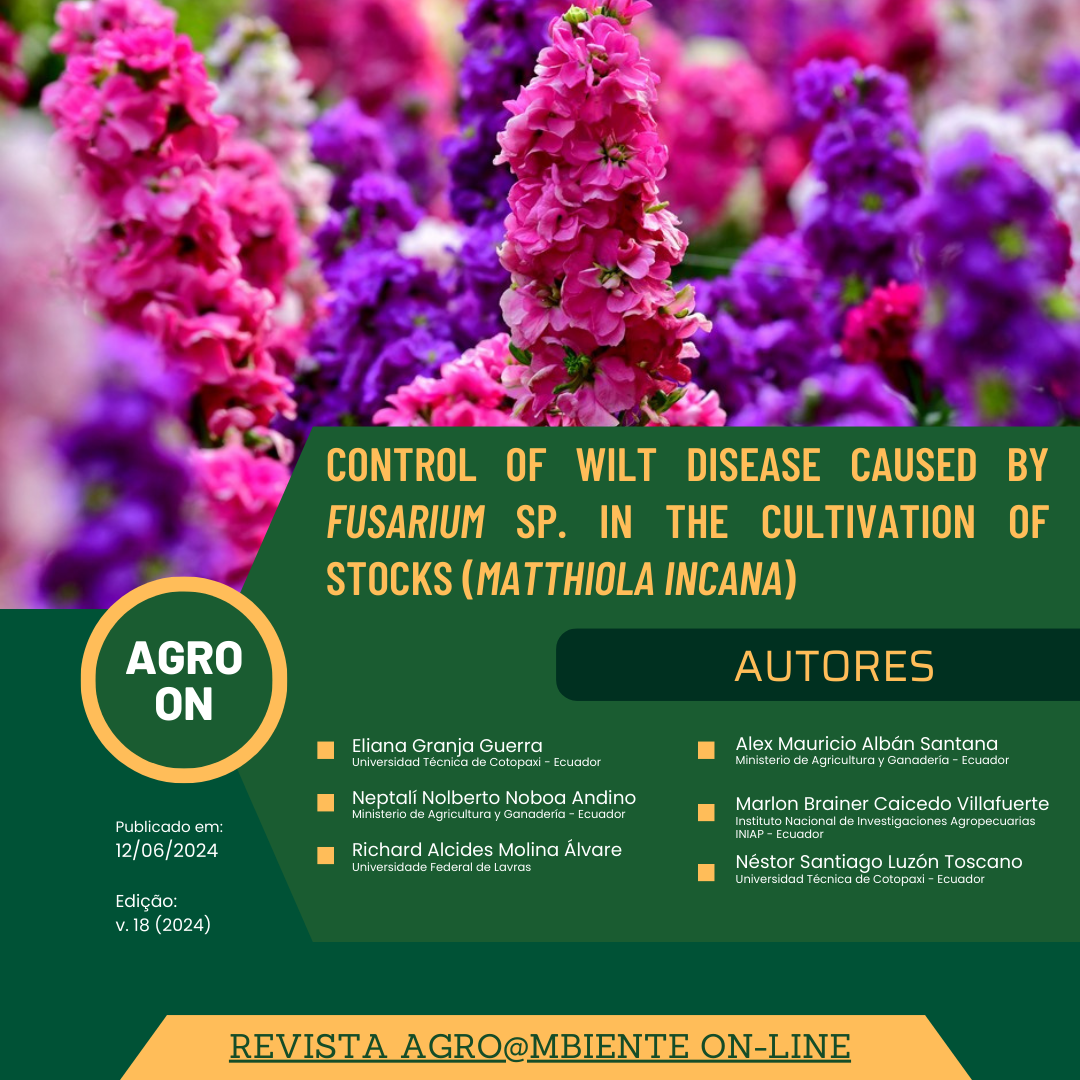Control of wilt disease caused by Fusarium sp. in the cultivation of stocks (Matthiola incana)
DOI:
https://doi.org/10.18227/1982-8470ragro.v18i00.7848Keywords:
Matthiola incana. Stocks. Bacillus Subtilis. Trichoderma sp. Severity.Abstract
In greenhouse cultivation of stock (Matthiola incana), the main causative agent of its death is the fungus Fusarium sp., especially in the early phenological stages, resulting in significant losses during the first four weeks of cultivation. Therefore, the objective of this study was to evaluate phytosanitary control techniques (chemical, biological, and antibiotics) to reduce Fusarium sp. infection in stock (Matthiola incana) cultivation. The experiment was conducted in a randomized block design with five treatments (control; chemical products; biological products, antibiotics, and product combinations) and three replications. The chemical active ingredients used were aluminum phosphite, iprodione, captan, and Hymexazol. Biological solutions included Trichoderma sp. and Bacillus subtilis, while antibiotics used were Weed Pirocontrole, Kasugamicin, Polioxin B, Azoxystrobin, and Kresoxym methyl. Additionally, product combinations were evaluated, such as Fosetyl aluminum, Bacillus subtilis, Polioxin B, Hymexazol, and Azoxystrobin. Control efficacy was measured based on the severity of fungal growth in culture, while mortality represented the loss rate at the end of the experiment. The combined treatment of techniques was superior, with a mortality rate of 13.77%, compared to the 63.00% recorded in the absolute control group. These results underscore the importance of an integrated approach to Fusarium sp. control in stock cultivation, emphasizing the effectiveness of combining different phytosanitary techniques to minimize losses and promote successful production.

Downloads
Published
Issue
Section
License
Copyright (c) 2024 AGRO@MBIENTE ON-LINE JOURNALRAGR

This work is licensed under a Creative Commons Attribution-NonCommercial-NoDerivatives 4.0 International License.
I declare on my behalf and on behalf of the other authors that I represent in the act of submitting this article, to REVISTA AGRO@MBIENTE ON-LINE that: • 1. The content of the article is the result of original data and not published or submitted to other journals . • 2. In addition to the lead author, all co-authors participated sufficiently in the work to make public their respective responsibilities for the content. • 3. In case of acceptance of the article, the authors agree that the copyright referring to it will become the exclusive property of Revista Agro@mbiente On-line, any reproduction, total or partial, in any other part or means of dissemination is prohibited, printed or electronic, without the prior and necessary authorization being requested and, if obtained, acknowledgments must be made to the Revista Agro@mbiente On-line of the Centro de Ciências Agrárias/UFRR.


